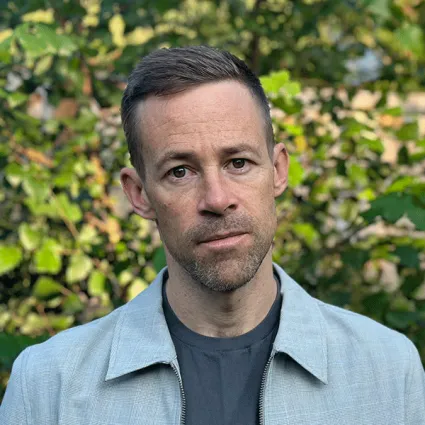Colin Hoag
Associate Professor of Anthropology & Department Chair of Anthropology

Biography
Colin Hoag holds doctorates in cultural anthropology and biological sciences, but studied literature as an undergraduate student. The courses he teaches at Smith—on the Anthropocene, botanophilia, landscape, atmosphere, capitalism, and others—draw on this interdisciplinary training.
His current work examines what plants can tell us about the conditions of life on earth. One component of this research focuses on the morphology, ecology, and phlyogeography of the most diverse and cosmopolitan plant family, the Compositae (also known as the sunflower family). Specifically, this includes a study of the natural history and population genetics of the charismatic North American subshrub Hecastocleis shockleyi (Hecastocleideae) and a taxonomic revision of members of the amphitropically disjunct genus Hymenoxys (Helenieae).
A second component focuses on the role of plant conservatories in shaping conceptions of place and the human condition under capitalist modernity, drawing on ethnography and literary history. As part of this project, Hoag recently co-curated an exhibit at the Smith College’s Lyman Conservatory focused on Sylvia Plath’s encounters with botany during her time as a student at Smith College. See here for details. Additionally, he organized a two-day symposium called “The Greenhouse Effect” featuring leading thinkers in the botanical humanities.
In 2022, Hoag completed a book project on water, colonialism, and rangeland ecology in the southern African country of Lesotho, where a multibillion-dollar scheme to export water to South Africa has generated fantasies of national economic development, as well as fears that soil erosion stemming from rural land use could imperil the water economy. The book examines the terrestrial politics of water export, including the social and ecological engineering required to produce water commodities. The Fluvial Imagination: On Lesotho’s Water-Export Economy was published with University of California Press. Writing for the project was supported by the Wenner-Gren Foundation, the American Council of Learned Societies, and the National Endowment for the Humanities. Thanks to the UC Press Luminos Initiative, the book is fully open access (follow this link to download a PDF).
Selected Publications
Books
The Fluvial Imagination: On Lesotho’s Water-Export Economy. University of California Press (2022).
Articles
Hecastocleis shockleyi (Hecastocleideae), the Desert Enigma: Close Encounters with One of Compositae's Most Solitary Lineages. Capitulum 4, no.1 (2025): 24-42.
“The Bell Jars: Smith College, Pelargonium sidoides, and Sylvia Plath’s Botanical Imagination.” Environmental Humanities 16, no. 1 (2024): 36-57.
“Interpreting Dwarf Shrub Patterns in the Lesotho Highlands.” In: Rubber Boots Methods for the Anthropocene: Doing Fieldwork in Multispecies Worlds, N. Bubandt, A. O. Andersen, R. Cypher, eds. Pp. 67-94. Minneapolis, MN: University of Minnesota Press (2023).
“‘Water Is a Gift that Destroys’: Making a National Natural Resource in Lesotho.” Economic Anthropology 6, no. 2 (2019): 183-194.
“Bureaucracy.” Oxford Bibliographies - Anthropology (2019).
“The Ovicaprine Mystique: Livestock Commodification in Post-Industrial Lesotho.” American Anthropologist 120, no. 4 (2018): 725-737.
“Wasteland Ecologies: Undomestication and Multispecies Gains on an Anthropocene Dumping Ground.” With F. Bertoni and N. Bubandt. Journal of Ethnobiology 38, no. 1 (2018): 88-104.
“African Environmental Change from the Pleistocene to the Anthropocene.” With J.-C. Svenning. Annual Review of Environment and Resources 42 (2017): 27-54.
“Dereliction of the South African Department of Home Affairs: Time for the Anthropology of Bureaucracy.” Critique of Anthropology 34, no. 4 (2014): 410-428.
“Assembling Partial Perspectives: Thoughts on the Anthropology of Bureaucracy.” PoLAR: Political and Legal Anthropology Review 34, no. 1 (2011): 81–94.
“The Magic of the Populace: An Ethnography of Illegibility in the South African Immigration Bureaucracy.” PoLAR: Political and Legal Anthropology Review 33, no. 1 (2010): 6–25.